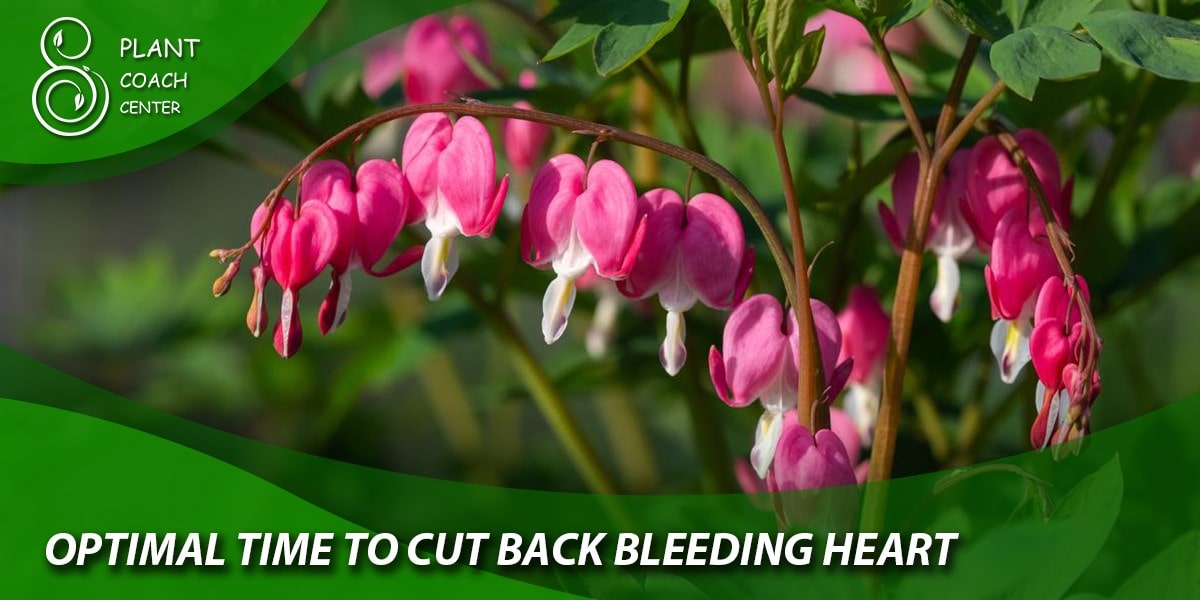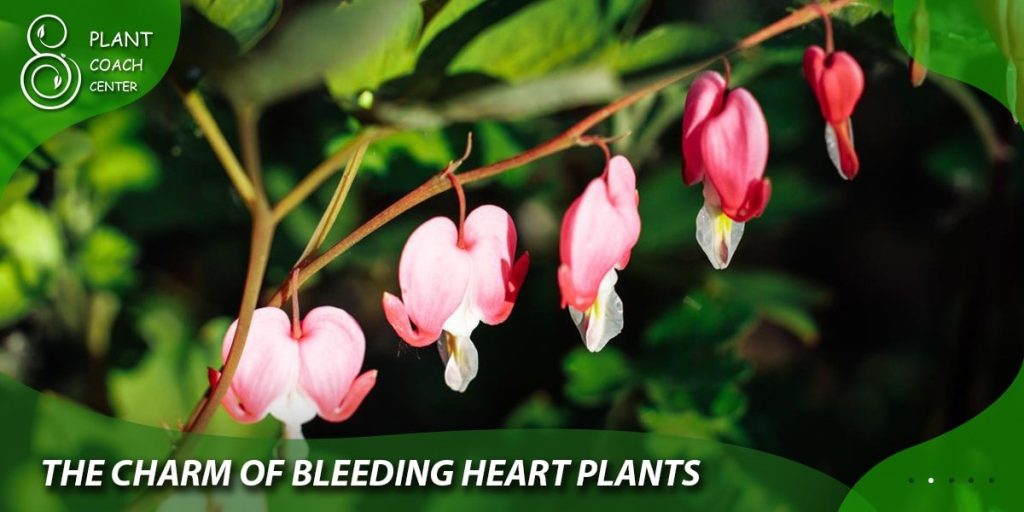Why Pruning is Essential for Bleeding Heart Plants
Pruning bleeding heart vines is a crucial aspect of their care, as it promotes healthy growth, encourages blooming, and maintains the plant’s shape. Without regular pruning, bleeding heart vines can become leggy, produce fewer flowers, and even succumb to disease. By pruning at the right time and using the correct techniques, gardeners can enjoy a lush, thriving bleeding heart plant that blooms profusely and adds beauty to the garden or indoor space. Pruning also helps to remove dead or diseased foliage, which can spread disease and attract pests. Furthermore, pruning bleeding heart vines helps to control their size and shape, making them ideal for container gardens or small spaces. By understanding the importance of pruning and when to cut back bleeding heart, gardeners can enjoy a stunning display of heart-shaped flowers and lush foliage throughout the growing season.
Identifying the Right Time to Cut Back Bleeding Heart
Knowing when to cut back bleeding heart vines is crucial to maintain their health and promote blooming. There are several signs that indicate it’s time to prune bleeding heart vines. One of the most obvious signs is deadheading, where the flowers have faded and turned brown. Removing these dead flowers, also known as deadheading, encourages the plant to produce more blooms. Another sign is foliage die-back, where the leaves have turned yellow or brown and are dropping off. This can be a sign of disease or pests, and pruning the affected areas can help prevent the spread of disease. Overcrowding is also a sign that it’s time to prune bleeding heart vines. If the plant has become too dense, pruning can help improve air circulation and reduce the risk of disease. Additionally, if the plant is looking leggy or unruly, pruning can help maintain its shape and promote bushy growth. By recognizing these signs and knowing when to cut back bleeding heart, gardeners can keep their plants healthy and thriving.
How to Prune Bleeding Heart Vines for Maximum Impact
To prune bleeding heart vines effectively, it’s essential to have the right tools and techniques. Start by gathering a pair of clean, sharp pruning shears or loppers, depending on the size of the stems. Next, inspect the plant and identify any dead, diseased, or damaged stems. Cut these stems off at the base, making a clean cut just above a node (where a leaf meets the stem). This will help prevent the spread of disease and encourage healthy growth. When pruning for shape, cut back long stems to about one-third to one-half of their length. This will encourage bushy growth and more blooms. For a more dramatic effect, prune the stems back to about 6-8 inches from the ground. This will stimulate new growth and produce a fuller plant. Remember to make clean cuts and avoid tearing the stems, as this can cause damage to the plant. By pruning bleeding heart vines correctly, gardeners can enjoy a lush, thriving plant with an abundance of heart-shaped flowers.
The Benefits of Pruning Bleeding Heart in Different Seasons
Pruning bleeding heart vines at different times of the year can have a significant impact on plant growth and blooming. In the spring, pruning can help control the plant’s shape and promote new growth. Remove any dead or damaged stems, and cut back the tips of the vines to encourage branching. This is also a good time to prune out any weak or spindly growth. In the summer, pruning can help encourage more blooms. Remove any spent flowers, and trim back the stems to about one-third to one-half of their length. This will stimulate the plant to produce more flowers. In the fall, pruning can help prepare the plant for the dormant season. Cut back the stems to about 6-8 inches from the ground, and remove any dead or diseased foliage. This will help protect the plant from disease and pests over the winter. By pruning bleeding heart vines at the right time, gardeners can enjoy a healthy, thriving plant with an abundance of heart-shaped flowers. Remember to always prune with a purpose, and consider the specific needs of the plant at different times of the year. By doing so, gardeners can enjoy the maximum benefits of pruning bleeding heart vines.
Common Mistakes to Avoid When Pruning Bleeding Heart
When it comes to pruning bleeding heart vines, there are several common mistakes to avoid in order to ensure the health and vitality of the plant. One of the most critical mistakes is over-pruning, which can cause stress to the plant and lead to disease or pest issues. It’s essential to prune only what is necessary to maintain the plant’s shape and promote healthy growth. Another mistake is pruning at the wrong time. Pruning bleeding heart vines at the wrong time, such as during the active growing season, can cause the plant to become leggy and weak. Instead, prune in the spring or fall when the plant is dormant. Failing to remove dead or diseased foliage is also a common mistake. This can spread disease and pests to other parts of the plant, causing further damage. Additionally, not making clean cuts can cause damage to the plant, leading to infection or disease. By avoiding these common mistakes, gardeners can ensure that their bleeding heart vines remain healthy and thrive. Remember, when to cut back bleeding heart vines is crucial, and pruning at the right time can make all the difference. By being mindful of these common mistakes, gardeners can enjoy a beautiful and thriving bleeding heart vine.
Pruning Bleeding Heart Vines for Container Gardens
When growing bleeding heart vines in container gardens, pruning takes on added importance. Since container gardens have limited space, pruning is crucial to maintain the plant’s shape and promote healthy growth. When to cut back bleeding heart vines in container gardens depends on the specific needs of the plant. In general, prune bleeding heart vines in the spring to encourage new growth and in the fall to prepare the plant for the dormant season. In addition to regular pruning, container gardens require special considerations. For example, soil quality and moisture levels must be carefully managed to prevent root bound and waterlogged soil. Prune bleeding heart vines in container gardens to maintain a bushy shape and encourage blooming. Remove any dead or diseased foliage, and trim back the stems to about one-third to one-half of their length. This will stimulate the plant to produce more flowers and maintain a healthy, compact shape. By pruning bleeding heart vines in container gardens, gardeners can enjoy a thriving, blooming plant in even the smallest of spaces.
Pruning Bleeding Heart Vines for Ground Plantings
When it comes to pruning bleeding heart vines in ground plantings, there are several key considerations to keep in mind. One of the most important is managing soil quality. Bleeding heart vines prefer well-draining soil that is rich in organic matter, so prune the plant in a way that allows for good air circulation and soil penetration. Additionally, prune the plant to accommodate its sunlight requirements. Bleeding heart vines prefer partial shade to full sun, depending on the climate, so prune the plant to allow for the right amount of sunlight to reach the foliage. Water requirements are also crucial, as bleeding heart vines prefer consistent moisture but can be susceptible to root rot if the soil is too wet. Prune the plant to promote healthy growth and prevent overcrowding, which can lead to disease and pest issues. When to cut back bleeding heart vines in ground plantings depends on the specific needs of the plant, but generally, prune in the spring to encourage new growth and in the fall to prepare the plant for the dormant season. By pruning bleeding heart vines in ground plantings, gardeners can enjoy a thriving, blooming plant that adds beauty and interest to the landscape.
Maintaining Your Bleeding Heart Plant After Pruning
After pruning bleeding heart vines, it’s essential to provide proper care to ensure the plant recovers quickly and continues to thrive. Watering is critical, as bleeding heart vines need consistent moisture to promote healthy growth. Water the plant deeply once or twice a week, depending on the climate and soil type. Fertilizing is also important, as it provides the necessary nutrients for the plant to produce new growth and blooms. Use a balanced fertilizer in the spring and summer months, and a fertilizer high in phosphorus in the fall to promote root growth. Monitoring for pests and diseases is also crucial, as bleeding heart vines can be susceptible to aphids, spider mites, and root rot. Keep an eye out for signs of infestation or infection, and treat the plant promptly if necessary. By providing proper care after pruning, gardeners can enjoy a healthy, blooming bleeding heart vine that adds beauty and interest to the garden. Remember, when to cut back bleeding heart vines is just the first step in maintaining a thriving plant – post-pruning care is equally important for optimal growth and blooming.






